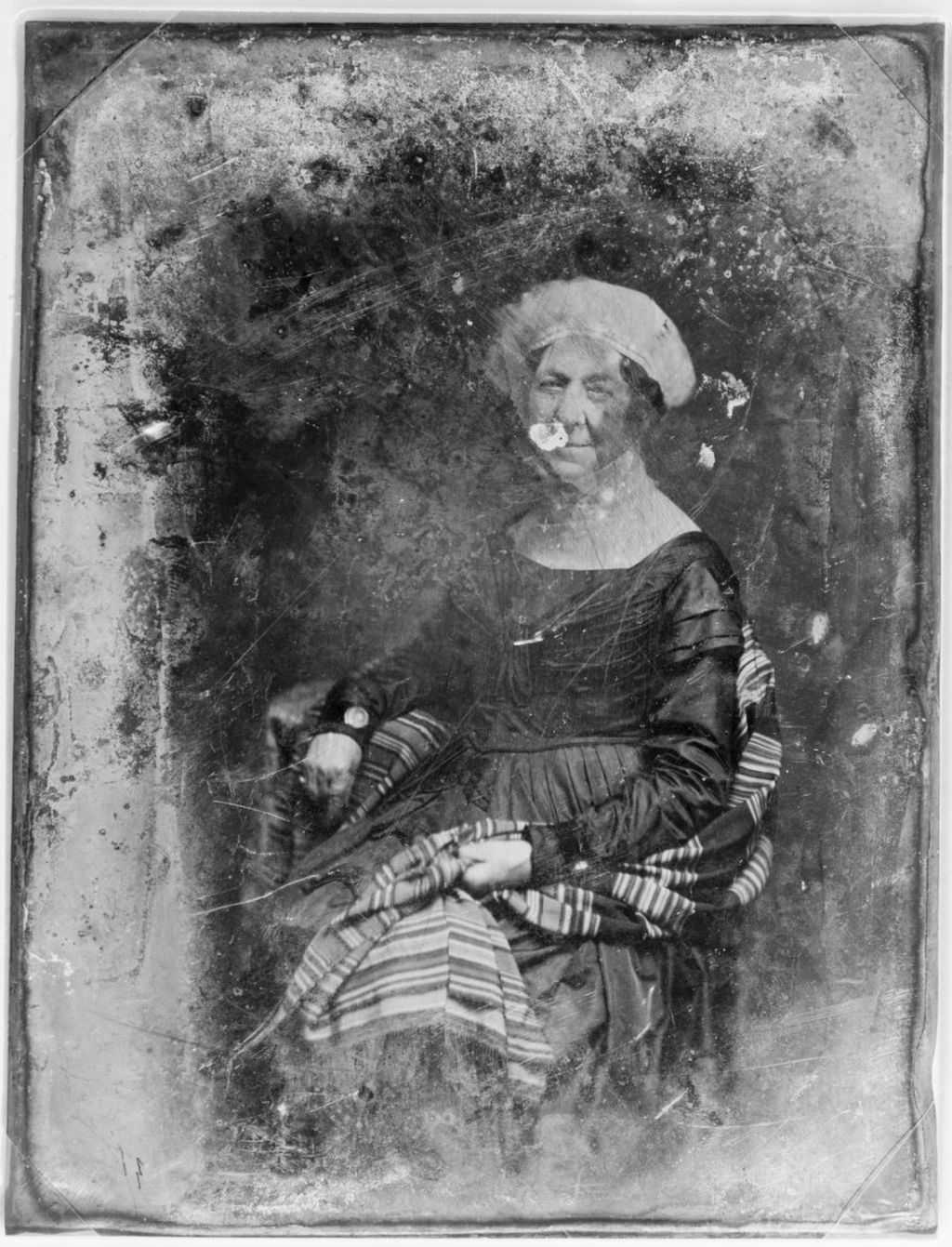In her later years, Dolley was urbane and gracious, but ruined financially by her spendthrift son.
-
February 1966
Volume17Issue2

It was taken near the end of her life, when site was. in the words of a contemporary, “… widowed, poor and without prestige of station [but] the same good-natured, kind-hearted, considerate, stately person, that she had been in the hey-day of her fortunes. Many of her minor habits, formed in early life, continued upon her in old age and poverty. Her manner was urbane, gracious, with an almost imperceptible touch of Quakerism. She continued to the last to wear around her shoulders a magnificent shawl of a green color. She always wore a lofty turban and took snuff.”
Before James Madison died in ]8gO, financial ruin had overtaken him as it had his fellow Virginia planters, Jefferson and Monroc, and his wife inherited a debt ridden estate and the task of publishing his papers, ft was her second widowhood, for she had lost her first husband. John Todd, Jr., and an infant son to yellow fever in 1793. Her only remaining child—a son by Todd—was a spendthrift and gambler, an alcoholic ne’er-do-well for whose sake she sold Madison’s plantation, Montpelier, and mortgaged her own house on Lafayette Square in Washington. As Dolley Madison’s time ran out, life did not seem to hold much for her. But the wise old eyes of the picture still twinkle, and in her eighth decade she was still very close to the center of things in the nation’s capital.
She became a public figure when Jefferson appointed James Madison Secretary of State in 1801. Jefferson was a widower, and his married daughters came to Washington infrequently: Aaron Burr, the Vice President, had also lost his wife; so the wife of the Secretary of State, who was next in line of precedence, became Jefferson’s hostess and social leader of the new capital.
When the Madisons arrived there, it was “ new county,” in Abigail Adams’ words, “surrounded with forest,” and the President’s house (in which the Madisons resided until they could find suitable lodgings) a “great castle” amid the lonely wilderness. But Dolley Madison soon gave the raw capital a standard of manners and a style it badly needed. “She has much taste,” the artist Eastman Johnson wrote. “She talks a great deal and in such quick, beautiful tones. So polished and elegant are her manners that it is a pleasure to be in her company.” At the inaugural hall held at Mr. Long’s Hotel after Madison succeeded Jefferson as President, she was “almost pressed to death” by those seeking a glimpse of her. “She looked a queen,” one woman wrote: “It would be absolutely impossible for anyone to behave with more perfect propriety than site did.”
“Mrs. Madison’s levees” were the supreme occasions of the Washington scene. Washington Irving told of entering “the blazing splendor” of her drawing room, where he was graciously received by Dolley—“a fine, portly, buxom dame, who has a smile and a pleasant word for everybody.” Under her eye the President’s mansion was furnished and decorated (Jefferson had been obliged to bring furniture from Monticello to the empty house), but her efforts went up in smoke in 1814, when the British burned the building. Happily for posterity, Dolley remained there until the last possible moment, packing a wagon with the “most valuable portable articles”—including Gilbert Stuart’s portrait of Washington, her husband’s papers, and many state documents.
At the end of his second term Madison retired to Montpelier, where Dolley worked with him on his papers and entertained a constant flow of guests, most of them uninvited. When she returned to Washington after her husband’s death, one of her first callers was John Quincy Adams. He had not seen her for twenty-eight years and was surprised Io find that “the depredations of time are not so perceptible in her personal appearance as might be expected.”
Following a custom she had begun in the White House, she opened her home to guests every New Year’s Day and July 4, and that first winter after her return she paid over two hundred calls herself. Daniel Webster lived nearby on Lafayette Square and was a frequent visitor (after he discovered her financial plight, the Senator often sent a Negro servant around to her door with a basket of food). President Tyler’s daughter-in-law regularly sought Mrs. Madison’s advice in social matters, and the old lady had a seat in the Tyler carriage on most official occasions. She was with the party in the Capitol when Samuel F. R. Morse, demonstrating his new telegraphic device, received the historic message from Baltimore, “What hath God wrought,” and it was to Dolley that Morse turned, asking if she would like to send a reply. She dictated: “Message from Mrs. Madison. She sends her love to Mrs. Wethered” (a friend with the group in Baltimore).
Fittingly, it was the first social message sent by telegraph. At the age of eighty, she attended President Polk’s final gala ball, walking through the crowded White House rooms on his arm, wearing a white satin gown and the inevitable turban, white satin with a fringe. And when the cornerstone of the Washington Monument was laid, on July 4, 1848, Dolley Madison, who had known George Washington, was there. The cameraman Mathew Brady had gone to the capital to photograph the historic event, and it is probable that he took advantage of the occasion to ask the old lady if she would sit before his camera.

